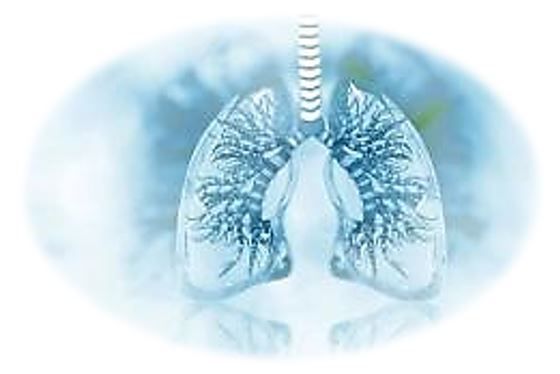- Clinical Technology
- Adult Immunization
- Hepatology
- Pediatric Immunization
- Screening
- Psychiatry
- Allergy
- Women's Health
- Cardiology
- Pediatrics
- Dermatology
- Endocrinology
- Pain Management
- Gastroenterology
- Infectious Disease
- Obesity Medicine
- Rheumatology
- Nephrology
- Neurology
- Pulmonology
Find and Treat Asthma and COPD: All Interventions Make a Difference, Study Concludes
Adults with undiagnosed asthma or COPD who were randomly detected and assigned to specialist or usual care all had improved outcomes at 1 year, Canadian authors reported.
©Crystal Light/stock.adobe.com

Adults with undiagnosed asthma or chronic obstructive pulmonary disease (COPD) benefit from clinical intervention whether from a primary care clinician or a pulmonology specialist, benefits that include reduced health care use, improved lung function, and improved disease-specific quality of life (QoL), according to findings from a new Canadian study.
While the study results showed that adults who received pulmonologist-directed care used significantly less health care resources over 52 weeks and had more robust improvements in QoL, the researchers, led by Shawn D Aaron, MD, MSc, from the Ottawa Hospital Research Institute, University of Ottawa, Ottawa, Canada, stressed that early identification of and any level of care for both respiratory diseases can lead to clinically important improvements in health status.
“Identification of patients with undiagnosed COPD or asthma could potentially allow for preventive environmental and lifestyle interventions to mitigate disease progression, offer opportunities for earlier treatment to alleviate symptoms, and reduce the need for future acute care for exacerbations,” study authors wrote in the New England Journal of Medicine.
Aaron and colleagues used a case-finding method to identify community residents aged 18 years and older with respiratory symptoms but without diagnosed lung disease. Recruitment began with automated telephone calls to more than one million households near 17 trial sites in Canada that queried household members with respiratory symptoms (eg, shortness of breath, prolonged cough, wheezing) in the past 6 months. Those identified with respiratory symptoms were interviewed for trial eligibility and assessed via spirometry for asthma and COPD.
Those identified with either chronic lung disease were enrolled in the multicenter, randomized controlled Undiagnosed COPD and Asthma Population (UCAP) trial, conducted from June 2017 to January 2024.
Investigators randomly assigned final participants to the study intervention – evaluation by a pulmonologist and an asthma-COPD educator who initiated guideline-based disease specific care) or to usual care by their own primary care clinician. For the primary outcome, Aaron et al calculated the annualized rate of participant-initiated health care utilization for respiratory illness and for secondary outcomes, assessed changes from baseline to 1 year in disease-specific QoL based on scores on the St. George Respiratory Questionnaire and burden of disease symptoms based on COPD Assessment Test (CAT) scores. They assessed change in lung function with measures of forced expiratory volume in 1 second (FEV1).
After interviewing 38 353 adults for eligibility, administering respiratory and lung function testing, and applying other inclusion/exclusion criteria, researchers identified 508 participants for randomization, assigning 253 to the pulmonologist care-based intervention group and 255 to usual care. The cohort had a median age of 63 years, average body mass index of 30 kg/m2, and was 61% men. Approximately half of both asthma and COPD groups were former smokers and one-quarter of each group identified as current smokers.
FINDINGS
At 1 year Aaron et al found the annualized rate of participant-initiated health care utilization for respiratory illness reduced by approximately 50% in the intervention group (0.53 vs 1.12 events per person-year; incidence rate ratio, 0.48; 95% CI, 0.36 to 0.63; P < .001). The researchers reported a consistent effect for the intervention across the asthma (IRR 0.49, 95% CI 0.33-0.73) and COPD (IRR 0.46, 95% CI 0.31-0.67) subgroups.
After 12 months, according to the study, improvements in disease-specific QoL, symptom burden, and lung function were significantly greater for the intervention group vs the usual care group: scores on the SGRQ were lower than baseline, -10.2 vs -.8 points, respectively (difference, −3.5; 95% CI, −6.0 to −0.9) and also were lower for the CAT, 3.8 vs 2.6, respectively (difference, −1.3; 95% CI, −2.4 to −0.1).
Improvement in lung function from baseline was dramatically better at 1 year in the pulmonology care group compared with the usual care group, at 119 mL and 22 mL, respectively, with a difference of 94 mL (95% CI, 50 to 138).
Over the 12 months of the study, 92% of participants in the intervention group and 60% in the usual care group initiated a new treatment for asthma or COPD, according to the study; a long-acting beta agonist plus inhaled glucocorticoid was most common in both groups (39.3% and 20.8, respectively).
In a discussion of the study’s limitations, Aaron and colleagues noted that the study was not powered for subgroup analyses of the secondary outcomes. Regarding population sampling, participation required a registered phone number, and so while the approach was overall random, the sample may not have been fully representative . They also reported that older adults appeared more willing to volunteer for the study, potentially a reason for the cohort’s mean age of 63 years.
Worldwide up to 70% of persons with COPD or asthma go undiagnosed, the authors wrote, particularly in resource-poor countries. Many are asymptomatic and most remain untreated. They add that the case finding questionnaires on symptomatology and the spirometry tools used in the study are “safe and relatively inexpensive,” and that the care provided in both study groups is “achievable within many health care systems,” suggesting the study design could have broader applicability.
And: “Although the results favored a pulmonologist-based intervention, the findings in the usual-care group suggest that management of previously undiagnosed asthma or COPD by a primary care practitioner may also be associated with positive changes in a patient’s health status 1 year after diagnosis,” the group concluded.
